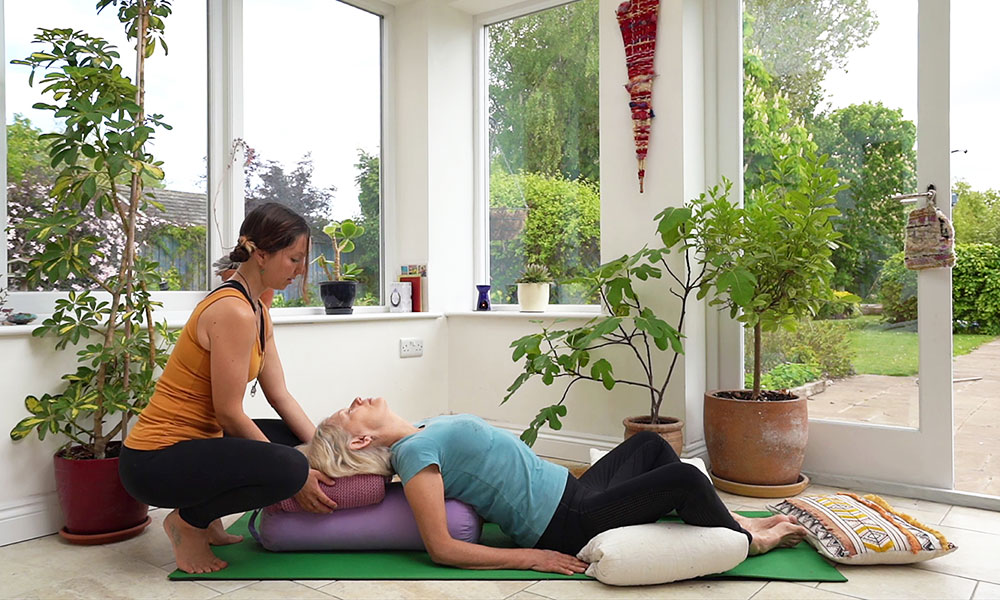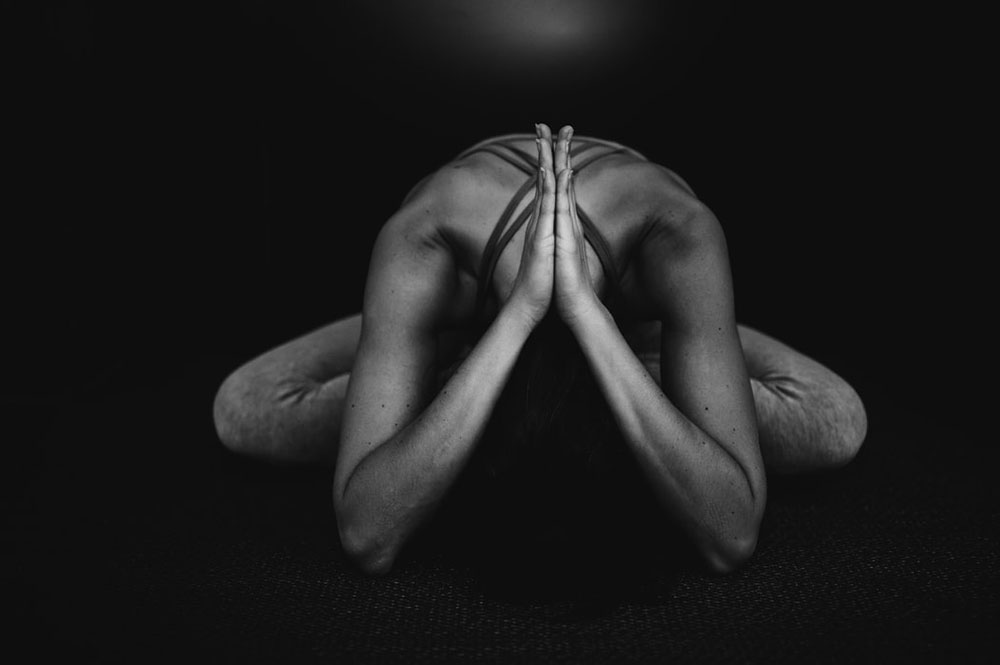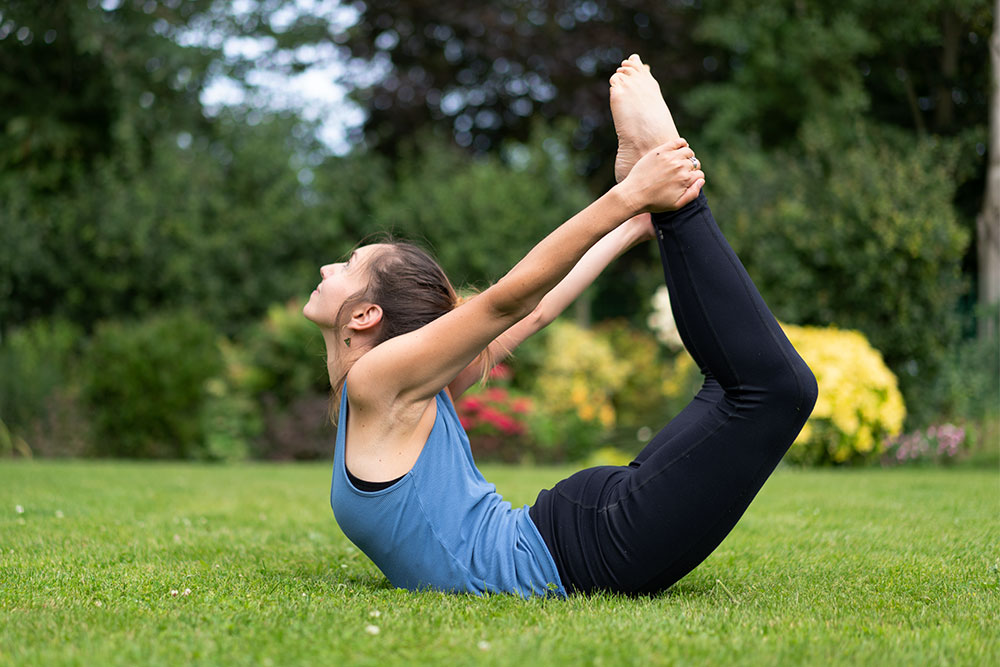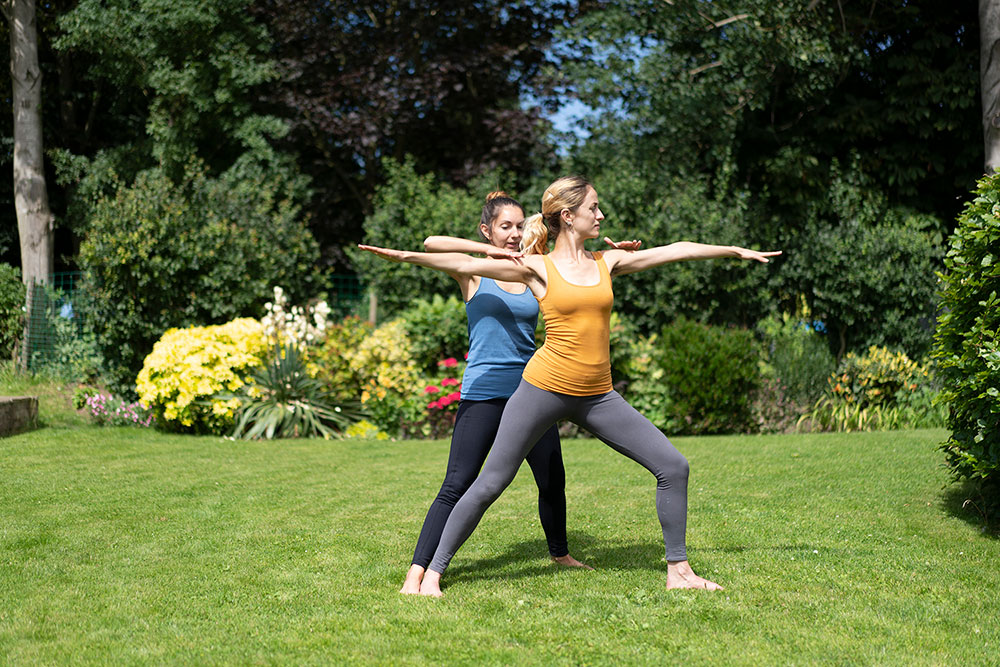
I recently came across this article I’d written from three years ago about teaching yoga one to one, which was the style of yoga I chose to specialise in teaching, after taking on my first private yoga clients in 2015.
I love teaching people one to one, in couples, and in small groups, because it allows me to really tune into their individual needs — in any given moment. I will very rarely come to a one to one session with a strict plan because the beauty of teaching in this way is that I get to tailor the session according to each person’s needs in any given moment.
This is how I practise yoga at home, and how I love to teach. I have no interest in making people practise styles of yoga, for example, that I love, because what’s right for one person might not suit another.
With this in mind, I always have a short health form for people to complete prior to their first one to one session with me which allows me to see what they want to get out of their yoga sessions. Following this, I will then offer an initial yoga taster session which allows people to see whether working with me is for them or not.
Should they want to continue — they have the chance after the taster session to feedback to me what worked or perhaps didn’t work for them, and talk about what they would like to get out of future sessions with me.
Tuning into the moment, adapting, and practising equanimity
Early on I used to create quite set plans for my one to one sessions and then have to abandon them. For example, I might have created an uplifting/ energising sequence, only to get to my client’s home and find that they’d had an exhausting day at work and had barely slept the night before. They might then ask me there and then — maybe several minutes before we start, if the session could focus more on meditation.
In many ways, I love this, because it allows me to think on my feet and create something that’s tailored to that client in the moment. It feels more authentic.
Perhaps some people will disagree with this way of teaching, but for me, the way I teach, is similar to how I practise yoga at home. My intention is always to feel at home in my body and mind, and to practise equanimity.
In many ways Vipassana meditation has shaped my yoga practice and the way I teach. Equanimity in the context of vipassana meditation means observing without judgement — allowing yourself to feel and observe whatever emotions, thoughts or sensations arise without trying to change, judge or stop them.

Observing how different style of yoga make me feel
I did have periods of my life where I had a self practice that remained the same each day. For example, both Sivananda and Ashtanga Vinyasa are set sequences — at least they were traditionally.
As my self practice developed, however, I started to mix and match and look at how different styles of yoga really felt for me. For example, Sivananda yoga — which includes lots of inversions and holding poses for longer periods of time — always made me feel so light. Ashtanga Vinyasa Mysore style felt like fire when I started. The energy it gave me was indescribable.
Similarly, certain asanas individually have made me feel a whole host of emotions, when I’ve explored them through meditation. Deep backbends have sometimes made me cry. Analoma Viloma (alternate nostril breathing) just takes me right back to a lovely place of balance. Inversions held for long periods of time, make me feel so so light and at peace in my body. Placing seated forward fold (paschimottanasana) near to the end of a sequence feels humbling. There’s a reason why many Sivananda teachers, call this pose the position of surrender.
Anything requiring strength in the legs and shoulders, fires me up and helps me in a weird way to be more practical in day to day life, as opposed to feeling more floaty and dreamy. I’m not the most practical if people, so often I will resist practices that require a lot of arm strengthening.
I could go on, but hopefully you get the idea. Of course, everyone will experience yoga completely differently, but I think this kind of exploration is really important, and when I teach, I try to show people how adaptable yoga can be.
For this reason, I don’t advocate any one style and I am a massive fan of exploring both movement and stillness. I love fast flowing dance like movement, holding asanas for longer, and exploring the poses more meditatively.
I might sometimes focus on working specific parts of my body or break asanas down and focus on say arm balances, but most of the time, I like to move my whole body in every plane of movement — exploring both dynamic movement and stillness. It’s the balance of yin/yang, loud/ quiet, hot/cold, serious/playful etc, that I love.

The yoga sequencing skeletons I work from inspiration
Just because I don’t create strict plans prior to teaching one to one sessions, doesn’t mean I don’t work from a plan. Instead I sequence from three main skeletons, which allows me to draw a lot from my own personal experience of yoga as Sivananda and Ashtanga Vinyasa are styles I’ve practised a lot.
- Sivananda yoga structure
- Ashtanga Vinyasa primary series structure
- The traditional bell curve structure of sequencing
More often than not, I’ll work from the traditional bell curve structure, which can then be changed so many times depending on the kind of mood I want to create. It also means (hopefully), I won’t feel stumped if someone says they want to focus specifically on arm strength, heart opening, headstand prep, overall relaxation etc. Using a basic structure, I can create sequences on the spot which change each time I teach.

It’s not about me
OK — regardless of where I’m teaching, it should never be about me. However, when I’m teaching one to one, I’m very conscious of this. I don’t turn up head to toe in the latest active wear and then place my mat in front of who I’m teaching and show off how bendy I am. In fact, unless the person I’m teaching is a complete beginner I often teach purely using my words and hands on adjustments.
My mat — if I use one — is placed next to theirs if I’m working with an individual and the focus is all on them.
I will also mirror a lot — and by this I mean, when demonstrating something, I will demonstrate to the physical ability and perhaps slightly beyond, to the person I’m teaching, because I don’t want people to push themselves unnecessarily or force their bodies. I also want to reinforce the point that yoga is not competitive and there is no end to the practice, in that every pose can continuously be adapted. If, for example, I start a session if the lotus position, some people may be impressed, but it also might make people think they have to sit like this.
Not so much with yoga, but I’ve been to classes before where the teacher has demonstrated pretty advanced moves, which on the one hand has been inspiring and makes me think they know their stuff, but on the other hand, it took the focus away from my learning.
Teaching yoga one to one yoga — final thoughts
My intention when I teach is to work with people over a long period of time — hopefully inspiring them to make yoga a regular part of their life.
People have all sorts of reasons for wanting to practise yoga one to one. Some people might have a specific illness or injury that they want to fix. Seeing a yoga therapist might then be the best option if this is the case.
Other people, however, might feel intimidated by group classes or maybe they want one to one tuition to make sure they’re doing all of the poses correctly. One to one yoga is also a great way to deepen your personal practice and discover what you’re capable of.
On top of this, having a yoga teacher to come over to your house and teach either you as an individual or you and your partner, friend or another family member is a really lovely experience — especially if you have a busy life or a time consuming job. You don’t have to think about finding your way to the studio, packing your yoga clothes etc. The teacher comes to you — often providing music, mats if you need them and will tailor the session to your exact requirements.
What are your thoughts? How have your one to one sessions differed from group classes? And if you’re a teacher, how does your teaching change/ stay the same when you teach one to one?

Recent Comments